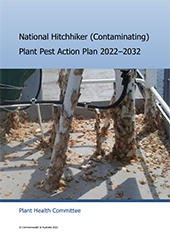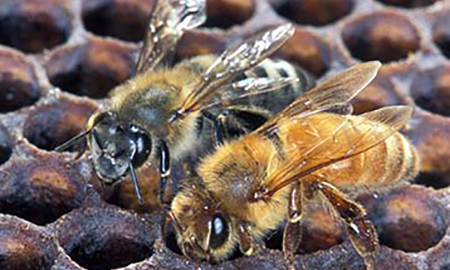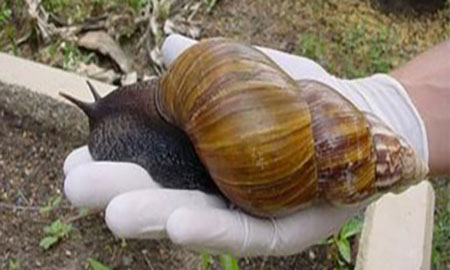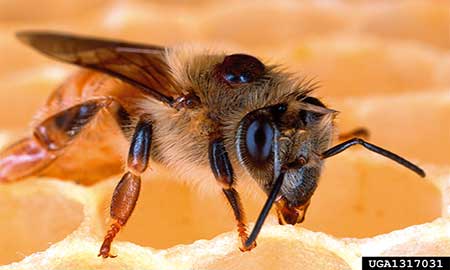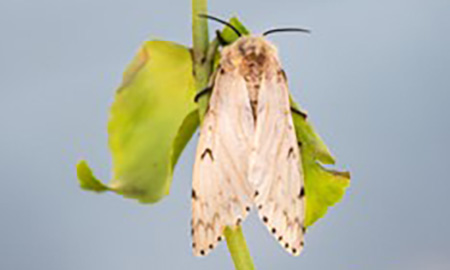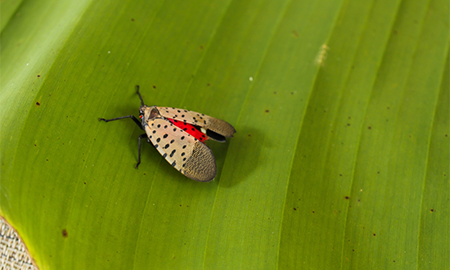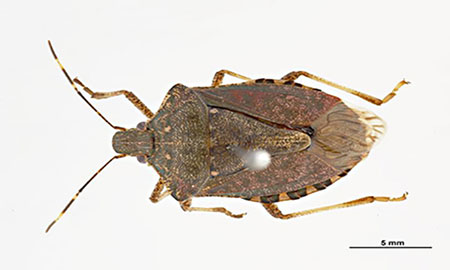A hitchhiker (or contaminating) pest is one that can ‘hitch a ride’ into the country. They come in on containers, goods or travellers’ luggage on ships and aircraft. They can also arrive on cargo such as cars, tyres or machinery.
These pests can remain hidden and undetected for a long time. This may allow them to enter new countries, establish and spread.
The National Hitchhiker (Contaminating) Plant Pest Action Plan 2022–2032 is a nationally agreed approach to:
- prevent the introduction of hitchhiker pests
- prepare for a response if detected in Australia.
Success of the plan depends on collaboration between stakeholders. These include:
- importers
- shipping businesses
- agricultural industries
- all levels of government
- non-government organisations
- individuals, experts and research agencies.
National Hitchhiker (Contaminating) Plant Pest Action Plan 2022-2032
What it covers
The National Hitchhiker (Contaminating) Plant Pest Action Plan covers these pests:
Bees (Apis spp.) (exotic species)
- Apis cerana (exotic) (Asian honey bee)
- Apis dorsata (Giant honey bee)
- Apis florea (Red dwarf honey bee)
- Apis mellifera capensis (Cape honey bee)
- Apis mellifera scutellata (African honey bee)
- Apis mellifera scutellata (hybrid) (Africanised honey bee)
Invasive snails (exotic species)
- Achatina fulica (Giant African snail)
- Caracollina lenticula (no common name)
- Pomacea canaliculate (Golden or channelled apple snail)
- Monacha spp. (no common name)
- Massylaea spp. (no common name)
Mites of bees (Apis spp.)
- Acarapis woodi (Tracheal mite, internal)
- Tropilaelaps clareae (Tropilaelaps mite, external)
- Tropilaelaps mercedesae (Tropilaelaps mite, external)
- Varroa jacobsoni (Varroa mite, external)
- Varroa destructor (Varroa mite, external)
Spongy moth
- Lymantria dispar and sub species
- Lymantria dispar asiatica (Asian spongy moth)
- Lymantria dispar dispar (Northern America/Europe spongy moth)
- Lymantria dispar japonica (Japanese spongy moth)
- Lymantria monacha (Nun moth)
Spotted lantern fly
- Lycorma delicatula
Stink bugs
- Erthesina fullo (Yellow-spotted stink bug)
- Halyomorpha halys (Brown marmorated stink bug)
Pest details
Implementation schedule
Each national action plan has an implementation schedule for actions and projects.
The National Hitchhiker (Contaminating) Plant Pest Action Plan involves more than 50 projects and business-as-usual activities.
Hitchhiker (Contaminating) Plant Pest Implementation Schedule 2023
Action areas
The National Hitchhiker (Contaminating) Plant Pest Action Plan focuses on these 4 action areas:
- prevention
- detection
- response
- cross-cutting, which contains actions that fit into 2 or more of the first 3 areas.
Projects and activities
Examples of projects and activities include:
- pest risk assessments
- review of sea and air freight containers as pathways for entry
- investing in automatic surveillance scanning technology
- improving tracking of goods and shipping containers.
Activities are reviewed annually and progress is documented.
Research highlight

eDNA detection of hitchhiker pests
Every living thing leaves traces of DNA in their surrounding environment. This is known as environmental DNA (eDNA). It can be harnessed to determine what species are present in a particular place at a particular time.
University of Canberra researchers have developed and validated eDNA tests for:
- Asian spongy moth
- Brown marmorated stink bug
- Khapra beetle
- Electric ant
- Red imported fire ant
- Spotted lantern fly (emerging hitchhiker pest).
This will make it easier to detect these pests in sea containers and other places
Image credit: University of Canberra
Completed projects
Area: Detection
- Detecting brown marmorated stink bug
- Biosecurity molecular screening using eDNA
- Detecting exotic bee mites.
Area: Response
Get involved
Are you a researcher, industry member or interested person? If you’d like to get involved email us at plantpestpreparedness@aff.gov.au.
Subscribe
Keep up to date with our biosecurity news.

